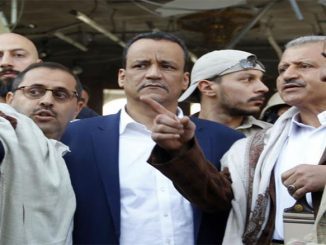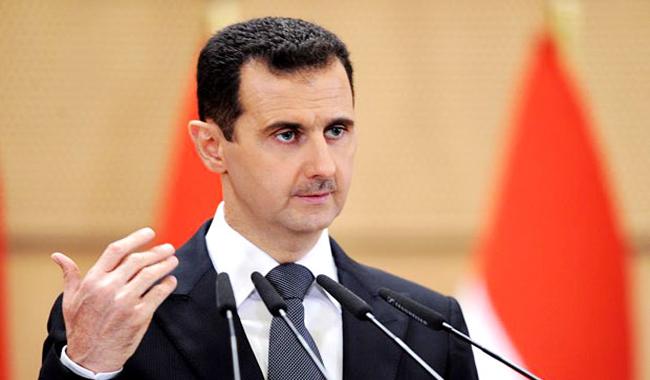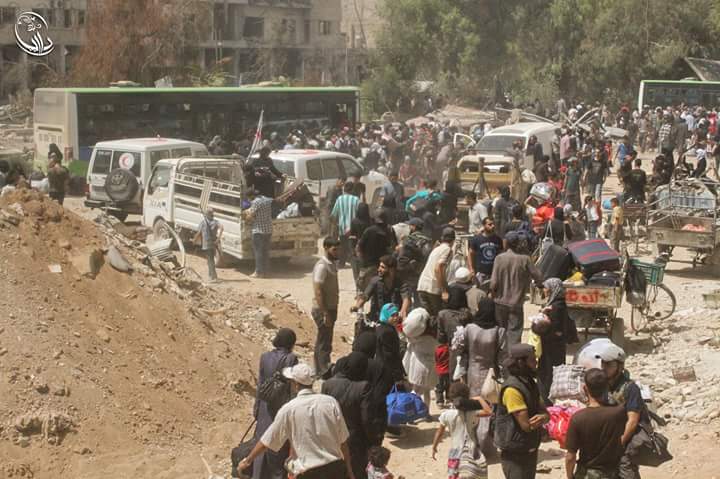
The first buses carrying residents and rebel fighters left the Damascus suburb of Darayya on Friday under a deal that will see the area evacuated after a four-year siege by government forces.
Aid convoys arranged by the medical charity Red Crescent entered the suburb early on Friday, as part of the deal that grants control of the area to government forces.
Rebel fighters and government forces agreed to a deal on Thursday to evacuate the town, which pro-government forces have surrounded since 2012. Since then, only one aid shipment has reached the area, according to the United Nations.
Residents were suffering from severe shortages and malnutrition prior to the aid deliveries, according to local activists.
check on youtube #Darayya #داريا and you will know the steadfastness story 🙁 .https://t.co/AZYoCURQzn pic.twitter.com/ySg2QTjTJr
— Abdalaziz Alhamza (@3z0ooz) August 25, 2016
This is what #Assad regime “victory” looks like.
Let that sink in.#Darayya #داريا pic.twitter.com/h07CX9lYzS
— Charles Lister (@Charles_Lister) August 25, 2016
A Reuters news agency witness saw six buses leaving the town, and footage on state television showed buses carefully driving past a large group of soldiers through streets lined with rubble.
According to the agreement, the first batch to leave the city will contain about 4,700 people, including 700 opposition fighters and 4,000 civilians.
Opposition fighters who desire to head to Idlib, in northern Syria, will be transported to that destination, while civilians’ exit will be secured to Qudsayya and Sahnaya areas in Damascus countryside, as a first step.
The last bye to the cemeteries in #Darayya before leaving the city by the green buses "Pessimism buses"#داريا . pic.twitter.com/qzFGxonGPL
— Abdalaziz Alhamza (@3z0ooz) August 26, 2016
Today #Assad regime cleansed #Daraya of Syrians with the help of #Russia #Iran #Hezbollah & the #UN. #Syria pic.twitter.com/HeHKqsPjmS
— شبكة الثورة السورية (@RevolutionSyria) August 27, 2016
#Syria: the Exodus of #Darayya, the city's people are leaving, it's likely they'll never return pic.twitter.com/TSDQlxryGc
— Thomas van Linge (@arabthomness) August 26, 2016
forced to sign the deal
The Syrian opposition criticised the evacuation, saying that the international community had failed the people of Darayya.
“Darayya did not fail today,” George Sabra of the opposition peace talks team told DPA news agency. “It was the international community who failed, and failed the people of Darayya.”
Sources told Al Jazeera that about 8,000 civilians and 800 rebels would be evacuated from the Damascus suburb, which, before the war, was home to a quarter of a million people.
Al Jazeera’s Hashem Ahelbarra, reporting from Gaziantep on the Turkish side of the Syria-Turkey border, said the rebels were “forced to sign the deal”.
“For nearly four years, residents of Darayya have lived under siege, with civilians being starved to death by government forces. This is a deal that the rebels had to sign, and we will now see civilians moved to Sahnaya – a town in the Damascus governorate – under regime control,” he said.
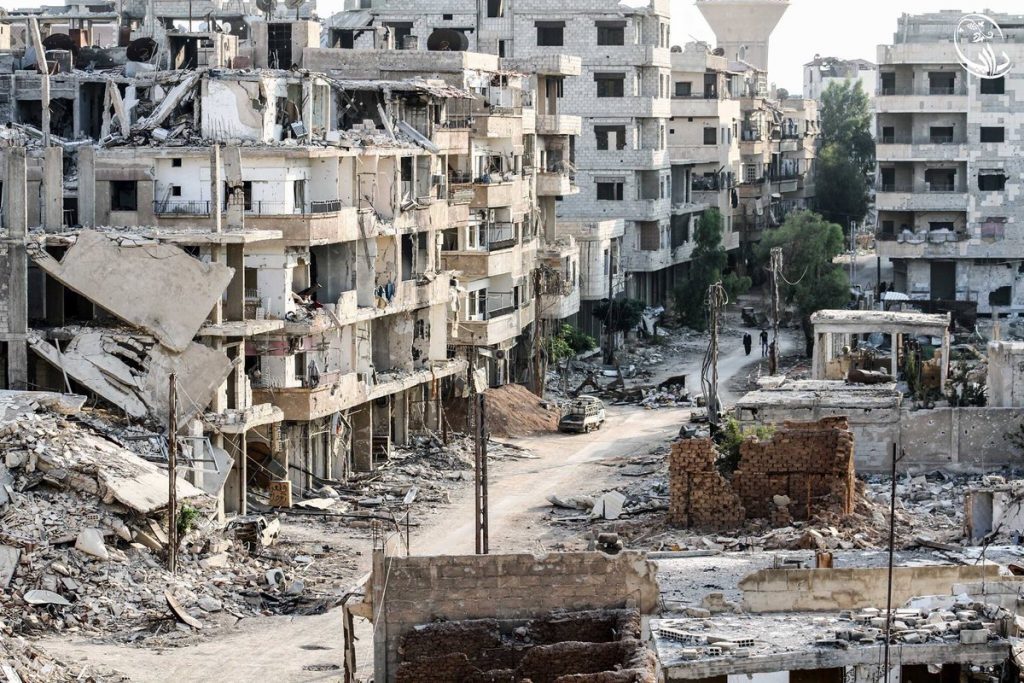
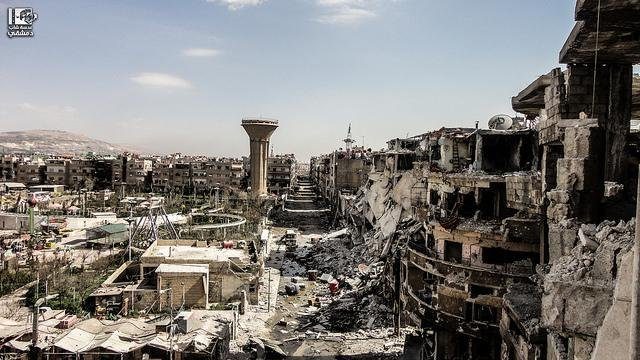
“For four years Darayya was under siege and the international community did nothing,” said Osama Abu Zaid, legal consultant to the Free Syrian Army, in a radio broadcast in northern Syria. “Four years and the United Nations couldn’t provide any humanitarian aid, except once.”
The town became known as a centre for the opposition from the start of the uprising against Assad, which later turned into a war. “Darayya was one of the very first towns to go against Assad. We started very early and we were so peaceful, we didn’t take the choice of raising arms for a full year,” said Kholoud Waleed, an activist from the town who now lives in exile.
The town was also the site of a notorious massacre by government forces almost four years to the day before the surrender was agreed. They stormed in to make house-to-house searches, and left hundreds dead in one of the worst killing sprees of the war.
For four years, Darayya was under daily attacks by Assad regime. Assad regime forces tried to take the city on the ground while Assad regime’s air force bombed the city daily. Darayya city is called “The capital of barrel bombs” as these was the most used weapons agaisnt the civilians besieged in the city.
The surrender and evacuation of the Damascus suburb after a brutal four-year siege is a devastating blow to opposition morale and a long-sought prize for Assad. Weeks of intense bombardment, which activists claim included napalm attacks, has finally overwhelmed the rebels and forces them to sign surrender, while the world stands watching the civilians being displaced.
Today is the 4th anniversary of #Darayya Massacre, when +500 civilians slaughtered by "Shabiha militia (#NDF now)". pic.twitter.com/9USsVCUNB0
— archicivilians (@archicivilians) August 25, 2016
moment fall explosive barrels of helicopters by #Assad_terrorism on residential buildings in City of #Darayya,#Syria pic.twitter.com/WLmoKRDVu4
— The Revolution Syria (@news_syrianall1) August 15, 2016

